Waddingtons Aces of Spades, 1970 onwards
Waddingtons Aces of Spades, 1970 onwards
In 1969-70 De La Rue sold out their playing card interests to Waddington’s, who then became the sole manufacturer of playing cards in the UK. Around this time Waddingtons re-designed their ace of spades into something based on De la Rue’s earlier 125th anniversary design but without the silhouette in the centre. Although contrived to resemble woodblock printing it carried elements from De la Rue’s original engraved ace of spades of 1862; shamrock leaves, thistles and roses, which are all repeated in the central ornament, with a crown at the top. The progression is shown here:
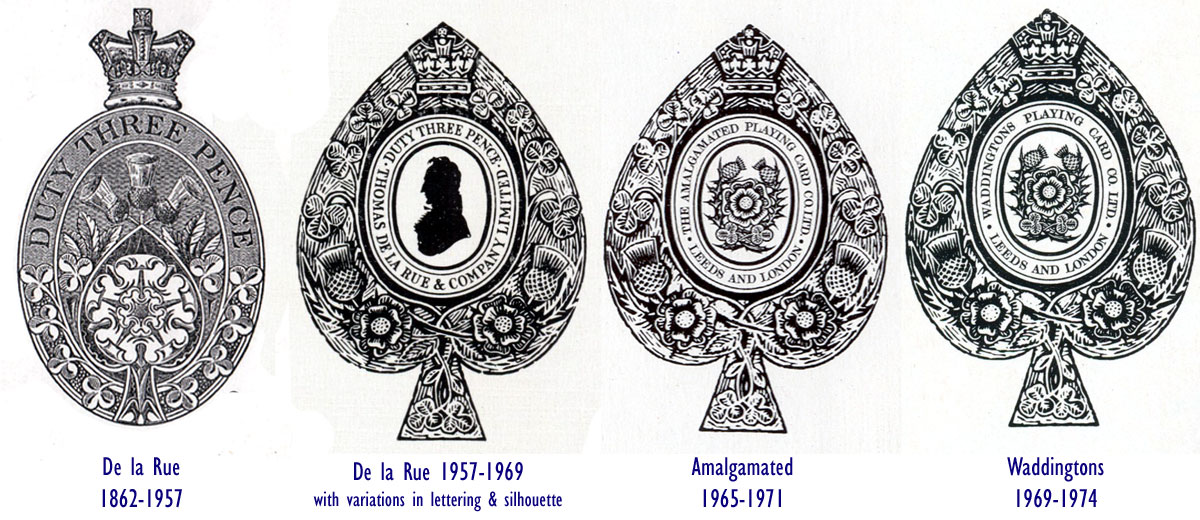
Above: similar symbolic motifs running through the De la Rue and Waddingtons aces of spades.
The same style of ace was also used for the Amalgamated Playing Card Co until 1971, when Waddington’s purchased De La Rue's share of APCC; and also in Wheel aces for Pepys.
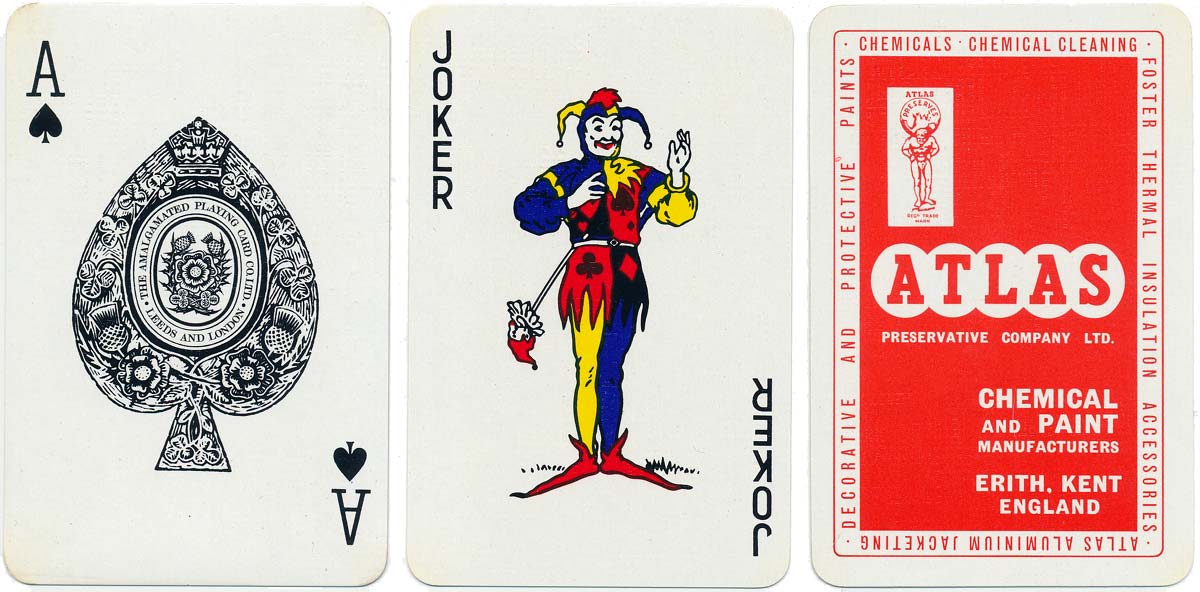
Above: playing Cards manufactured by Waddington’s for The Amalgamated Playing Card Co Ltd, c.1970. See also: ‘Cir-Q-Lar’ playing cards, Amalgamated Playing Card Co Ltd, c.1970→
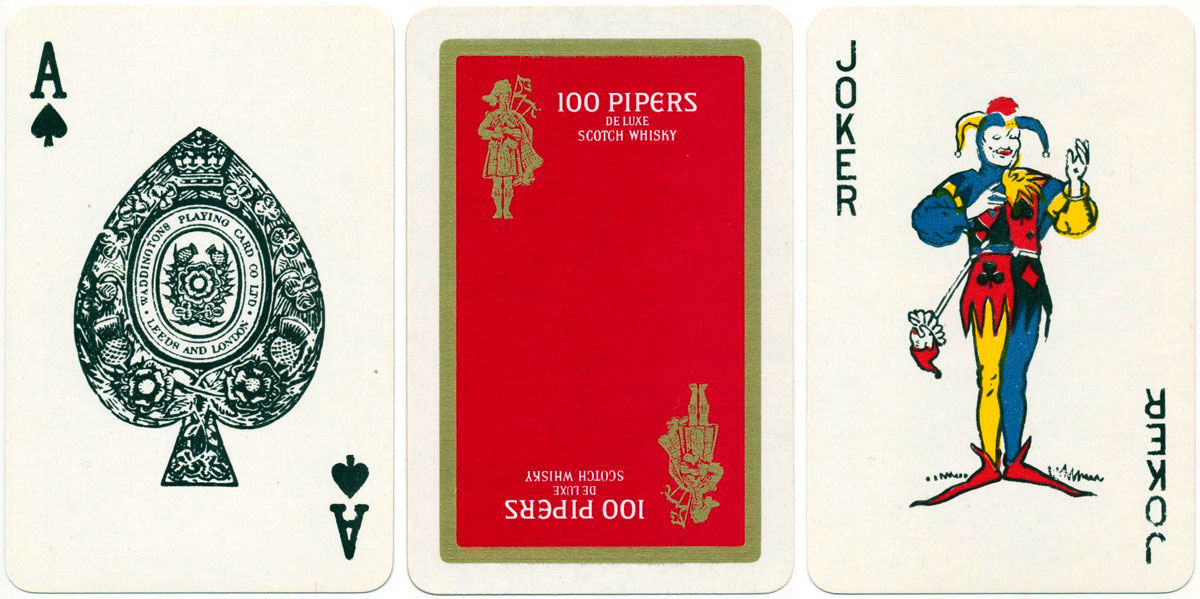
Above: 100 Pipers Scotch Whisky promotional deck, Waddingtons P.C.Co., c.1973 more →
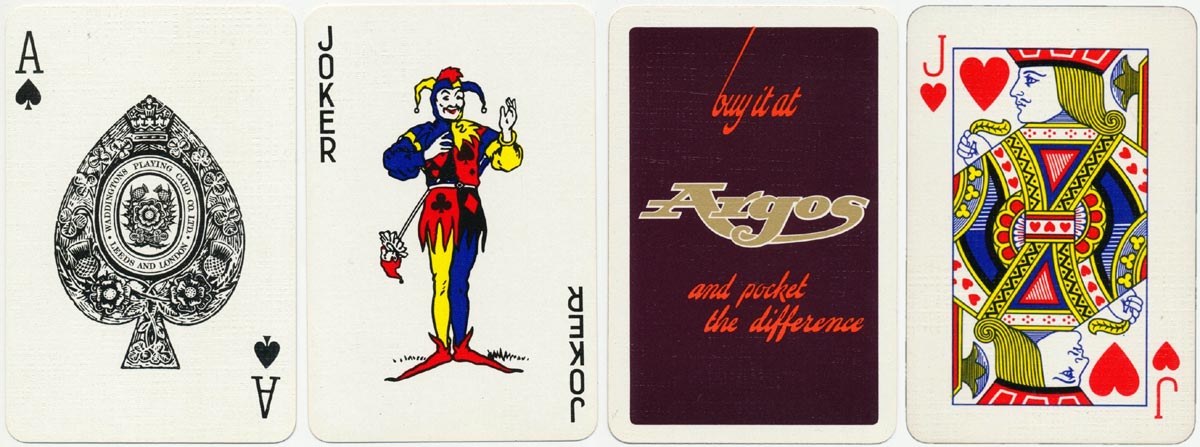
Above: Argos, c.1973.
More examples 1970-1973
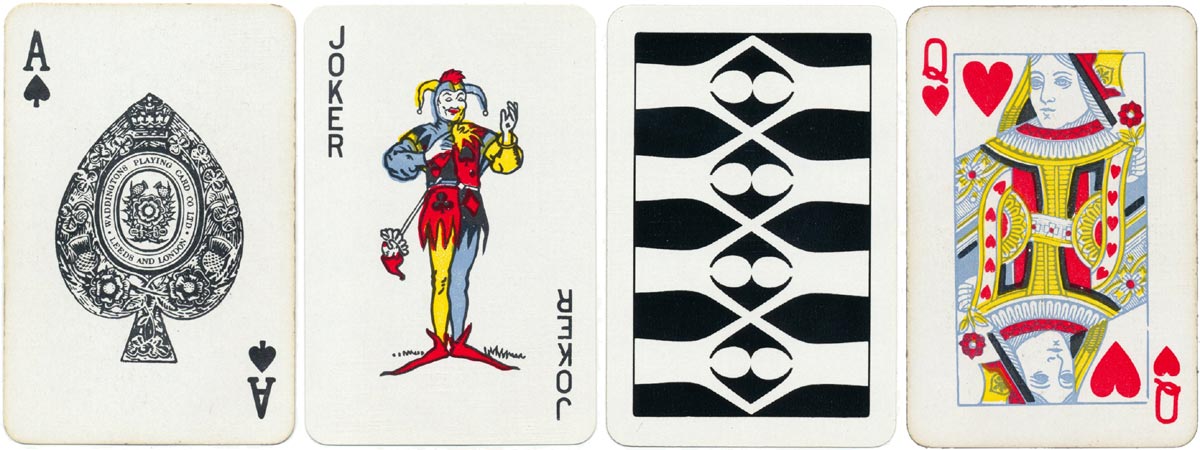
Above: Save the Children Fund, single-colour back design and poor print quality, early 1970s.
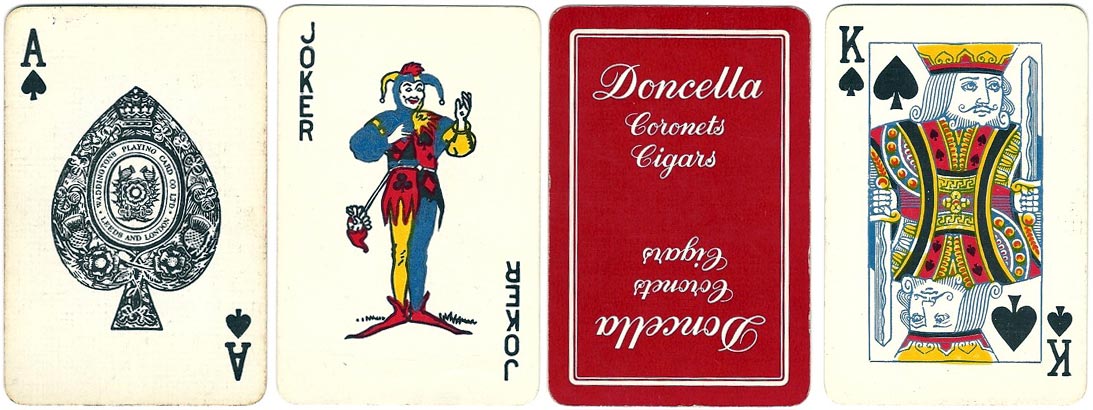
Above: Doncella Coronets Cigars, early 1970s.
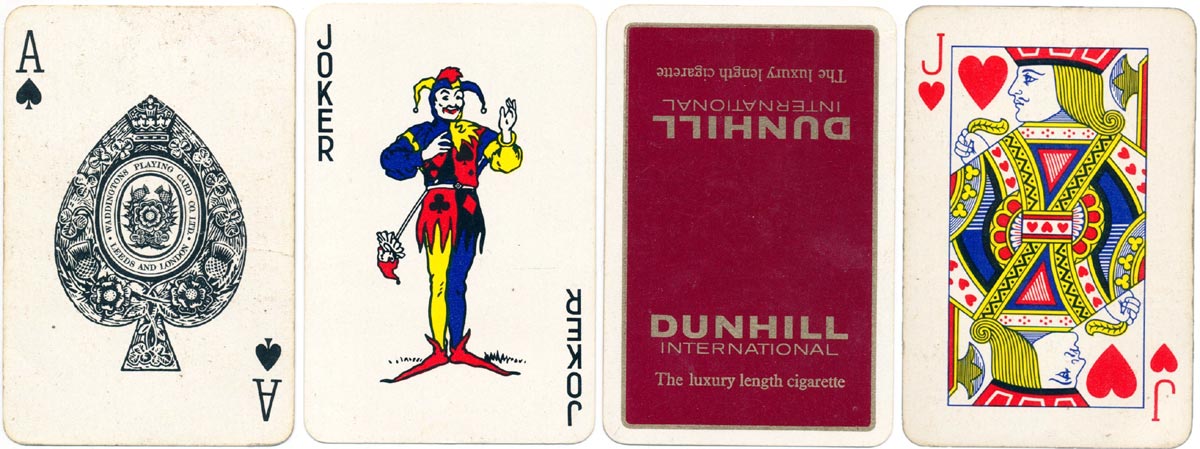
Above: Dunhill International, c.1972.
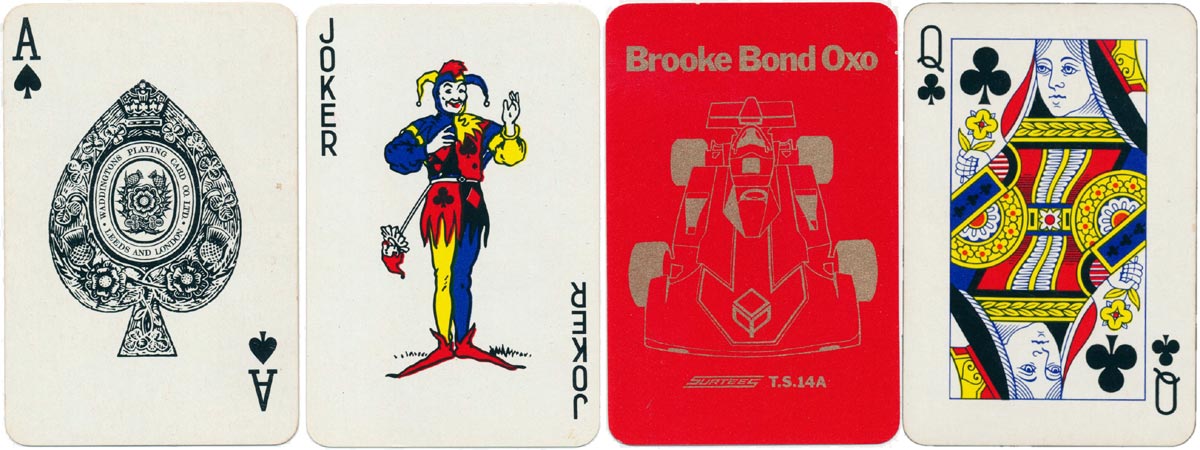
Above: Brooke Bond Oxo, 1973. We can date it so accurately by the design on the back, the Surtees racing team utilised the TS14A car in 1973 only.
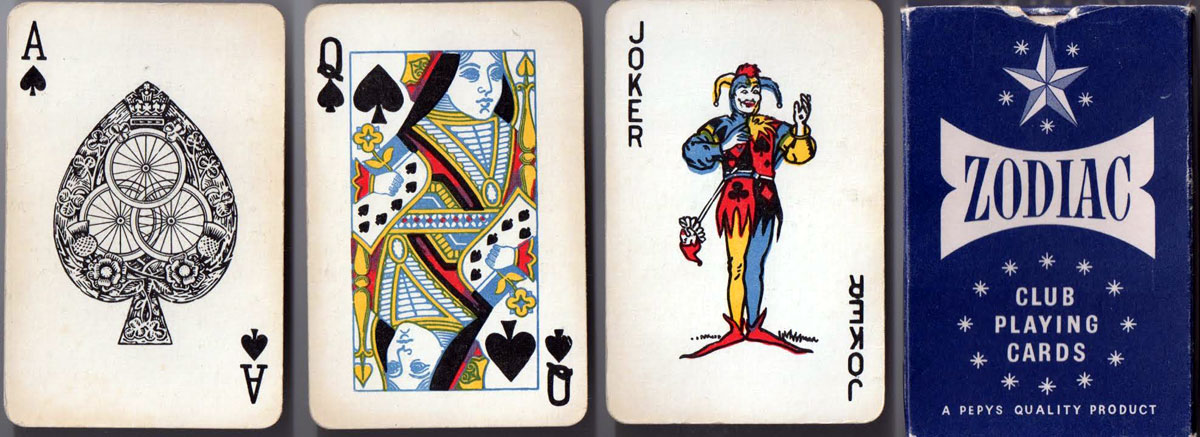
Above: Waddingtons ‘Zodiac Club Playing Cards’ for Pepys, after Alf Cooke was taken over by the Amalgamated Playing Card Company Ltd in 1971. Image courtesy Ken Lodge.
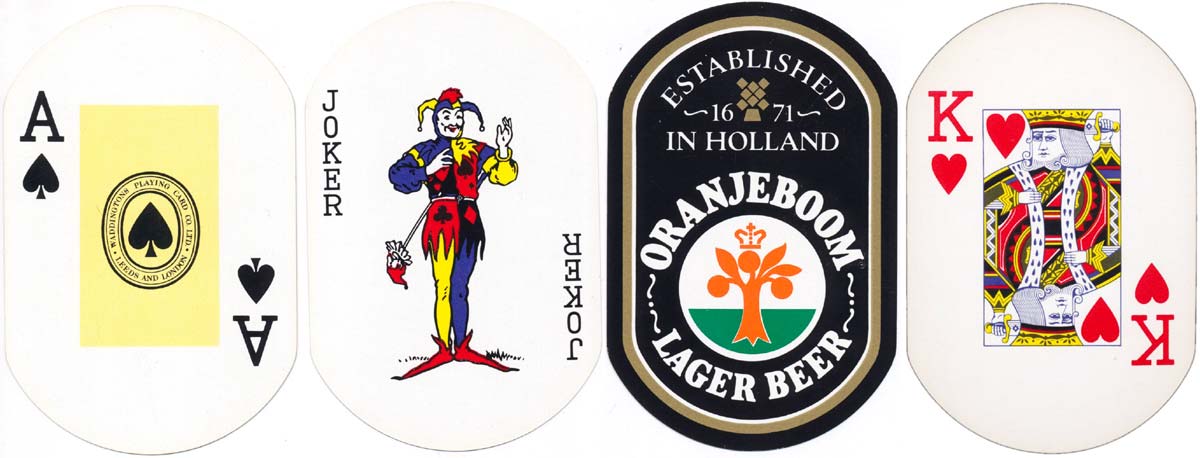
Above: a simplified version of the ace of spades with the same lettering was used in Easy to See, large-index packs. c.1974-80. Image courtesy Matt Probert.
Welsh Leek Added in 1974
The Welsh leek was added to the decoration of the ace of spades in 1974. While the preferred Welsh national symbol is often a daffodil, a dragon or a harp, the leek is an ancient traditional emblem for Wales. The British £1 coin representing the Welsh part of the United Kingdom has a leek on the reverse. Thus the ace of spades design combines heraldic elements that reflect the legal jurisdictions of the United Kingdom: the Tudor rose for England, the leek for Wales, the thistle for Scotland and the shamrock for Ireland, all topped by a Royal Crown.

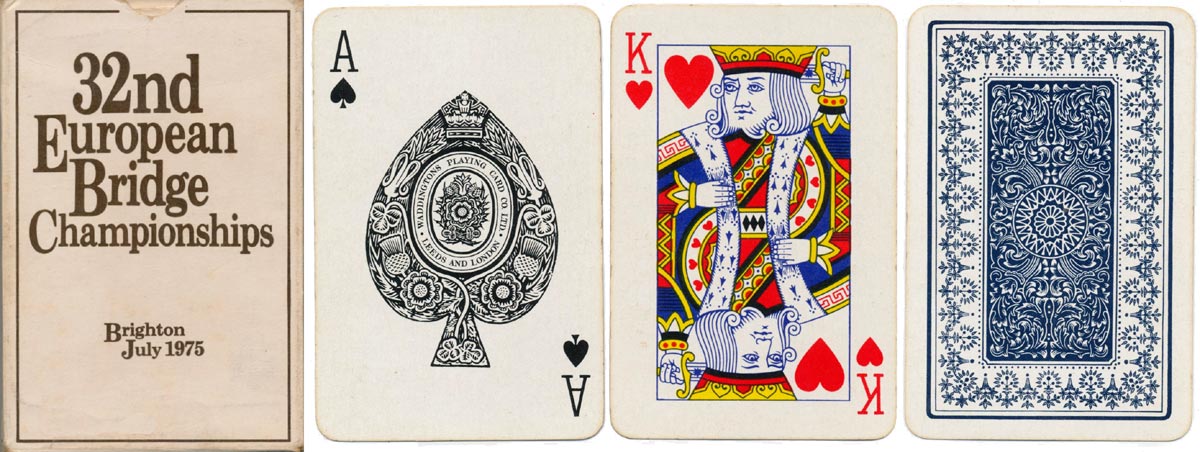
Above: 32nd European Bridge Championships, 1975
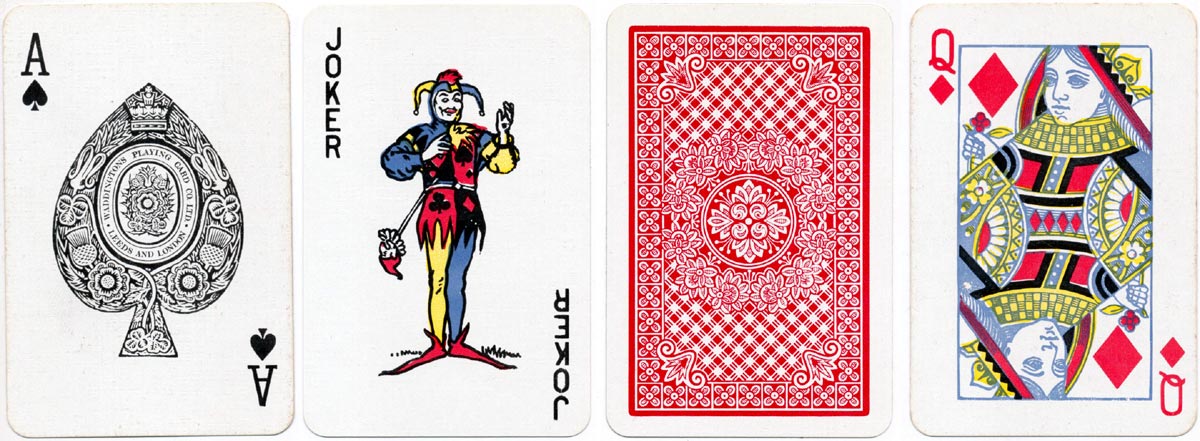
Above: Sovereign playing cards printed by Waddingtons, c.1975
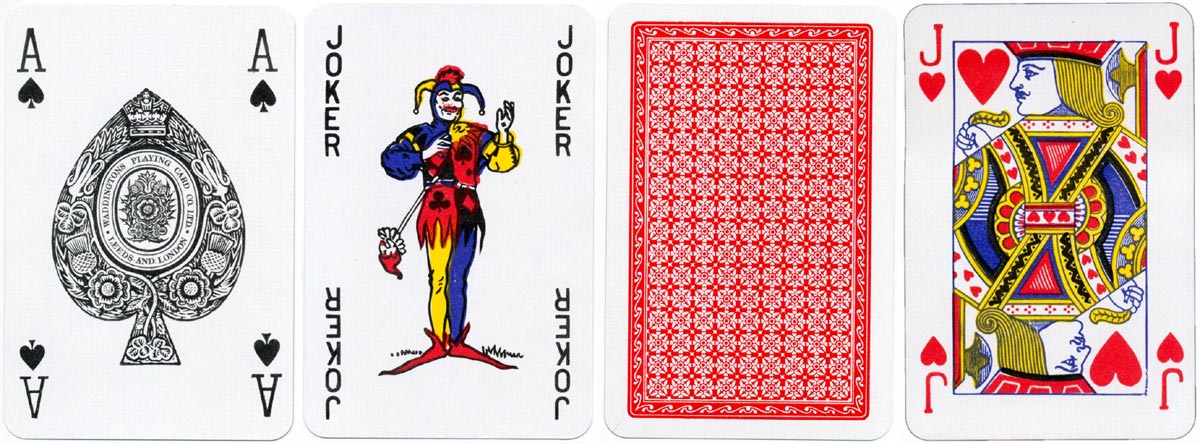
Above: Bridge playing cards printed by Waddingtons, c.1980
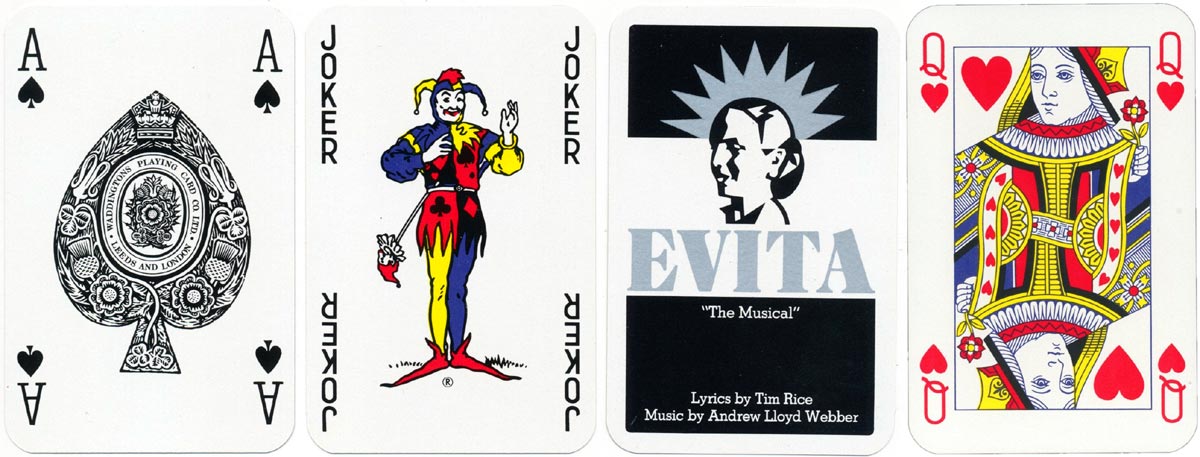
Above: the registered trademark symbol ® appears on the joker late 1982 start of 1983.
More examples c.1983-1994
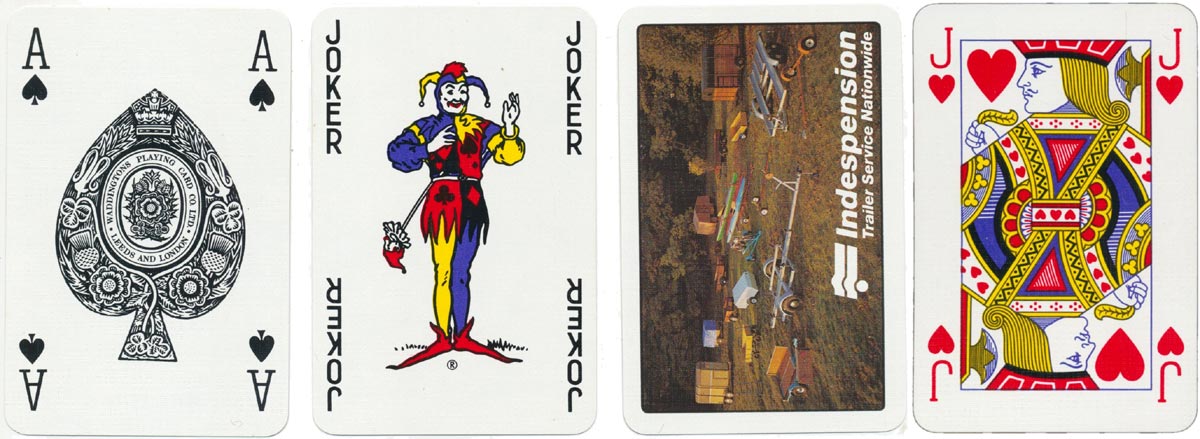
Above: 1984

Above: various advertising backs from this period.
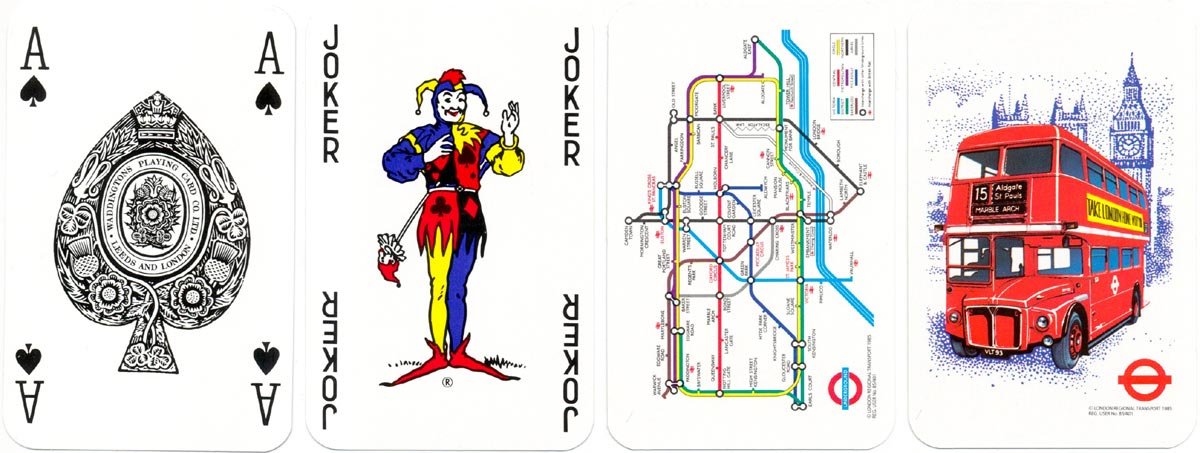
Above: 1985
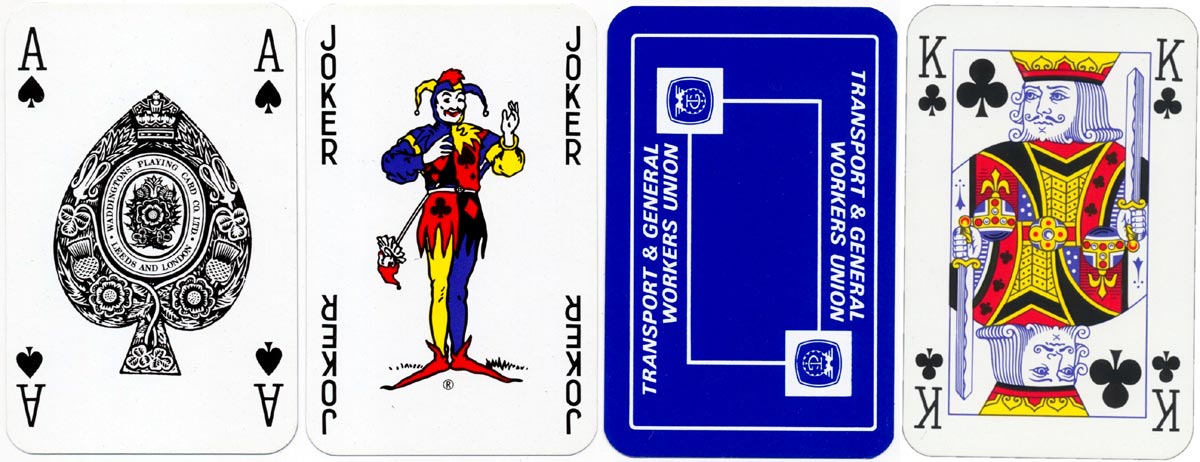
Above: advertising deck for TGWU by Waddingtons.
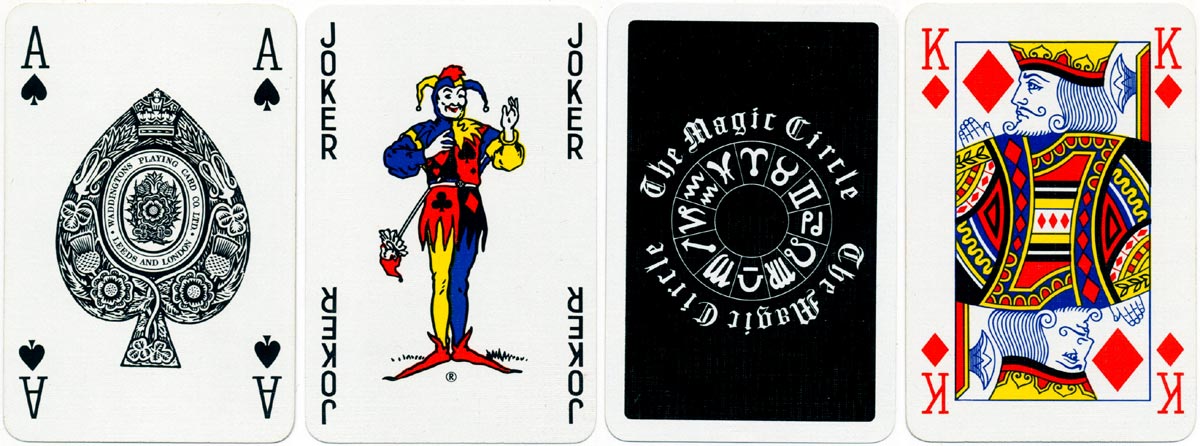
Above: advertising deck for Magic Circle by Waddingtons.
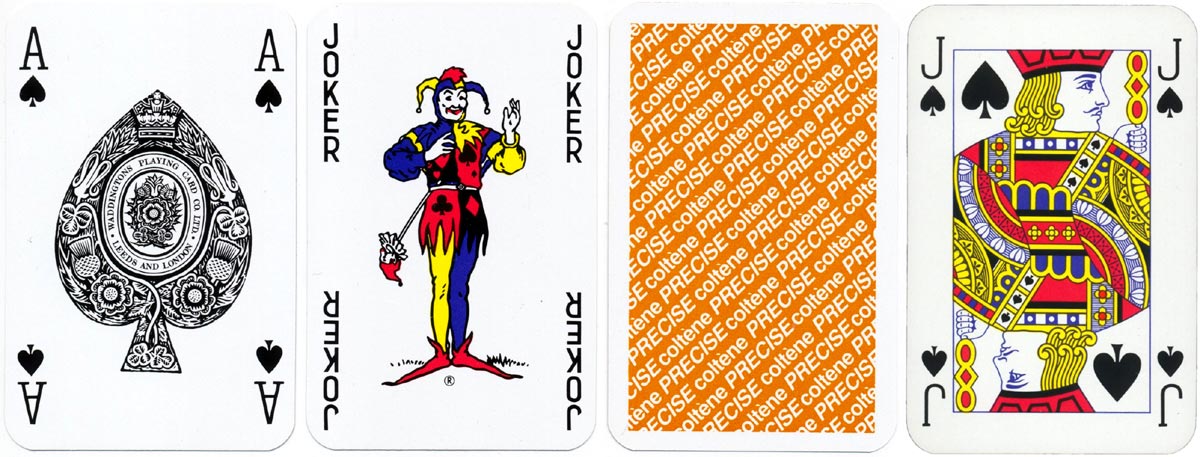
Above: advertising deck for Precise Coltène by Waddingtons. The cards are smooth finish, but good quality and nicely printed.
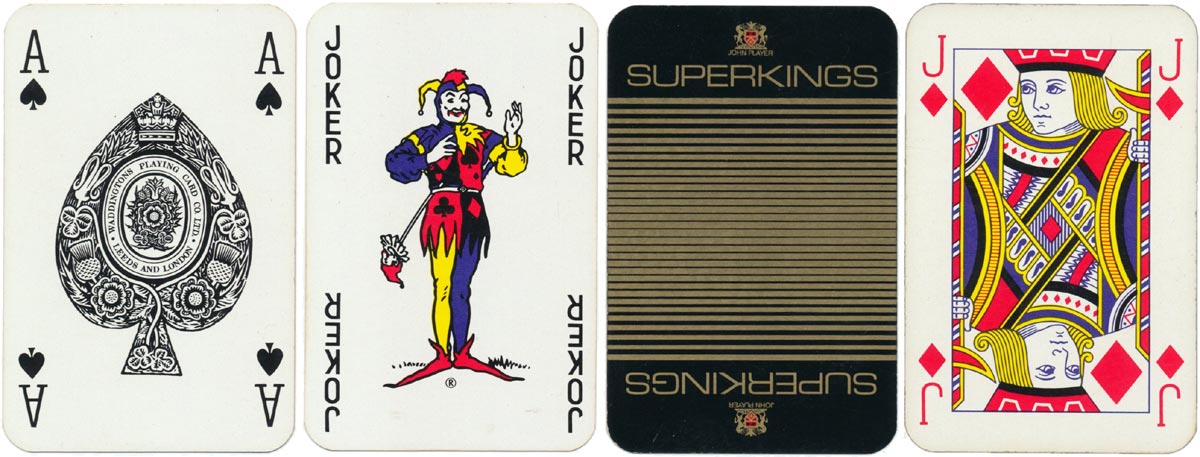
Above: advertising deck for John Player Superkings by Waddingtons Playing Card Co Ltd
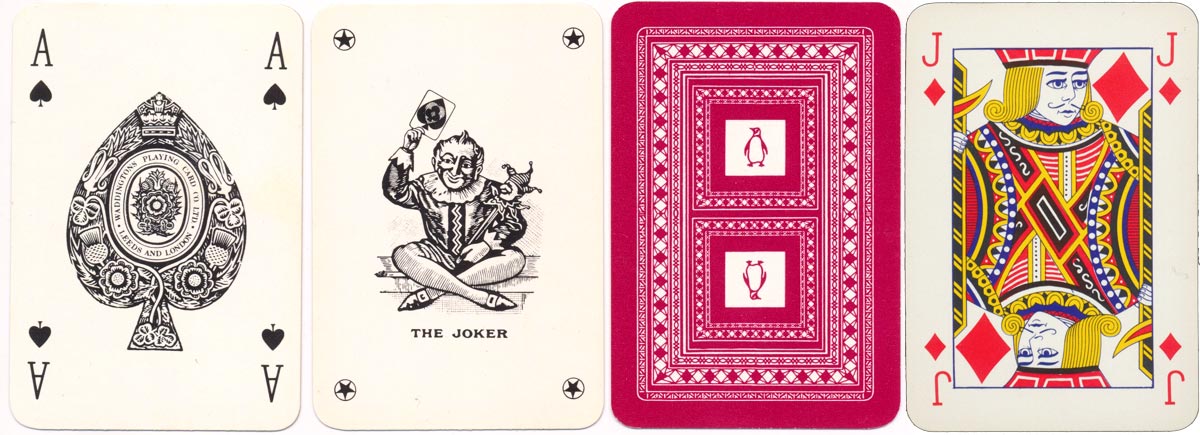
Above: patience sized pack published for Penguin books in c.1975 with the Goodall cross-legged joker and older-style Waddington's courts. All above images courtesy Matt Probert.
Lettering Simplified, early 1990s
From the early 1990s packs appear with the words “Leeds and London” omitted from the ace of spades.
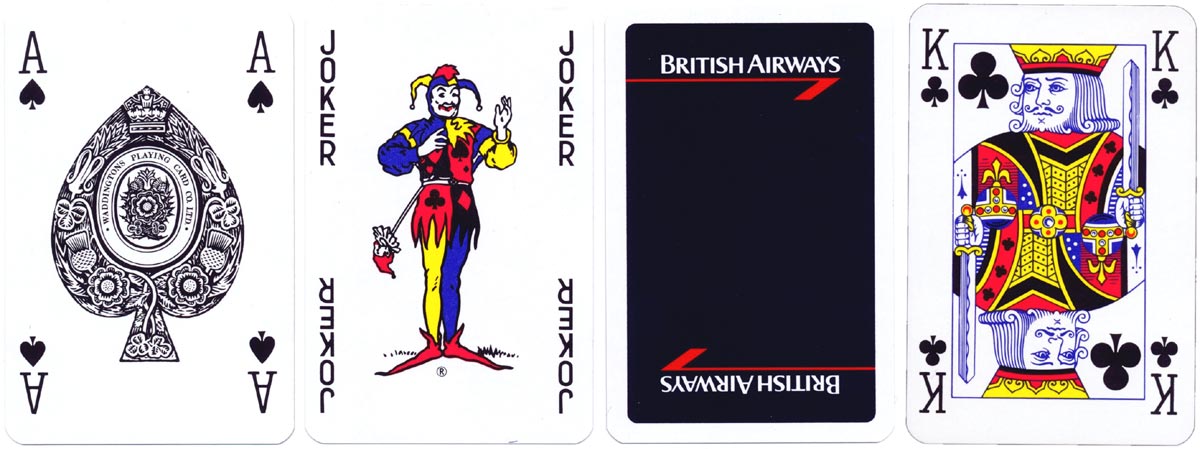
Above: British Airways pack with simplified lettering on the ace of spades, 1990s.
Hasbro, a large toy company, bought Waddington's Games in 1994. Waddington’s No.1 Playing Cards are still a best seller in Britain, but today they are manufactured in Poland and marketed by Winning Moves, who bought the brand from Hasbro.
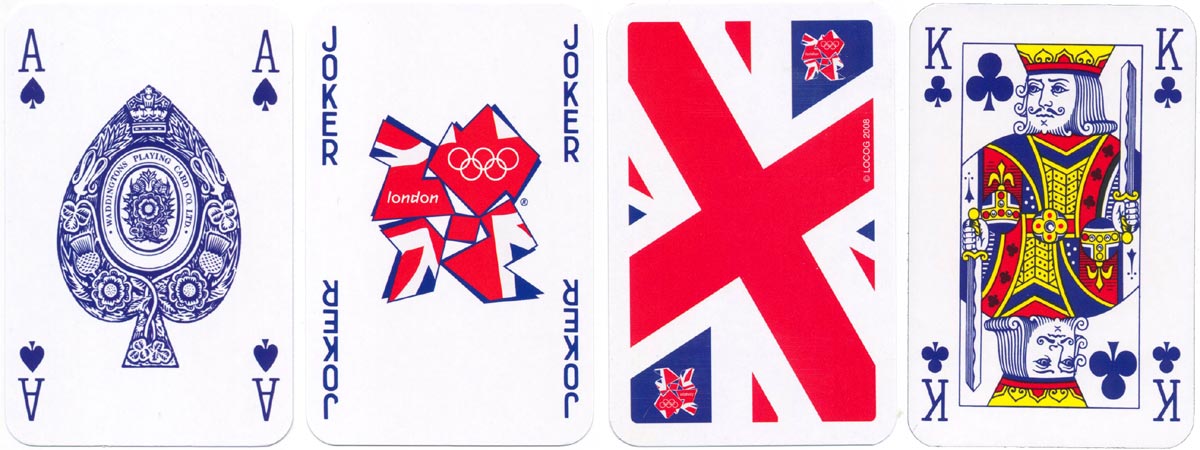
Above: "Union Flag" deck from the London 2012 Olympics (produced in 2008 by Winning Moves). The legend inside the ace has been simplified.
By Simon Wintle
Spain • Member since February 01, 1996 • Contact
I am the founder of The World of Playing Cards (est. 1996), a website dedicated to the history, artistry and cultural significance of playing cards and tarot. Over the years I have researched various areas of the subject, acquired and traded collections and contributed as a committee member of the IPCS and graphics editor of The Playing-Card journal. Having lived in Chile, England, Wales, and now Spain, these experiences have shaped my work and passion for playing cards. Amongst my achievements is producing a limited-edition replica of a 17th-century English pack using woodblocks and stencils—a labour of love. Today, the World of Playing Cards is a global collaborative project, with my son Adam serving as the technical driving force behind its development. His innovative efforts have helped shape the site into the thriving hub it is today. You are warmly invited to become a contributor and share your enthusiasm.

Related Articles
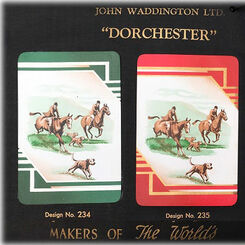
Waddington’s 1940 Trade Brochure
Waddington’s 1940 Trade Brochure.
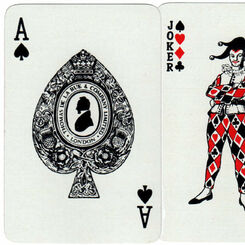
When three brands merge...
After De la Rue factories were bombed in 1940 their cards were printed by Waddingtons. In 1962 Waddi...
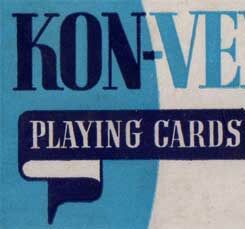
Kon-Vex Playing Cards
Waddington’s introduced a series of unusual shapes in the early 1950s.
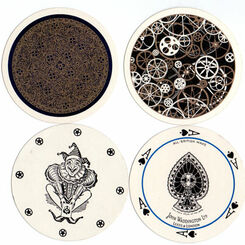
Cir-Q-Lar
Cir-Q-Lar Playing Cards. In 1929 John Waddington Ltd commenced the production of circular cards and ...
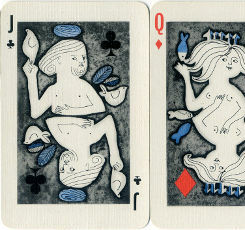
Siriol Clarry
Playing cards designed by Siriol Clarry
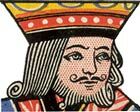
John Waddington Ltd, early type
John Waddington Ltd, early type Ace of Spades and court cards, 1922-30.
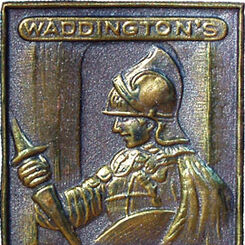
Waddington’s Playing Cards
John Waddington Limited was a leading producer of playing cards and card games in the UK during the ...

Amalgamated Playing Card Co., Ltd
Agreement had been reached between Waddington's and De La Rue during the second world war for Waddin...
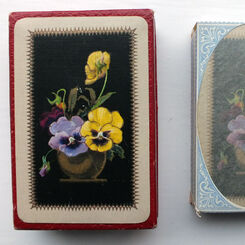
Waddington’s “Envoy“ Series
Waddington’s “Envoy“ Series.
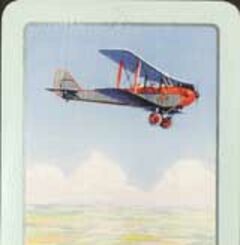
Waddington’s “Flying” Series, 1933
Waddington’s “Flying” Series, 1933.
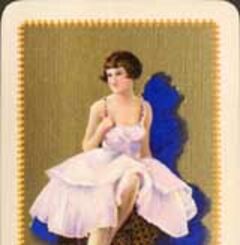
Waddington’s Encore Series
Waddington’s Encore Series 1933.
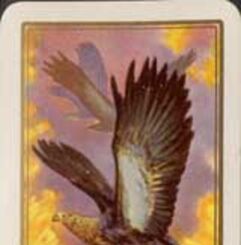
Waddington’s Classic and Wildlife Series, 1933
Waddington’s Classic and Wildlife Series, 1933.
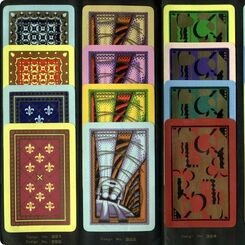
Waddington’s Varsity Series
Waddington’s Varsity Series.
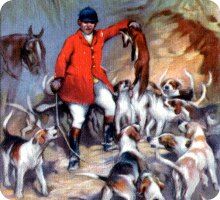
Waddington’s Sporting Series
Waddington’s Sporting Series, 1933.

Waddington’s Cir-Q-Lar Playing Cards
Waddington's Cir-Q-Lar Playing Cards, c.1930
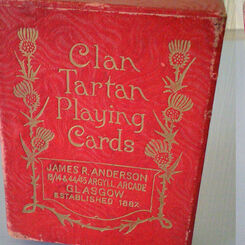
Waddington’s Clan Tartan Series
Waddington’s Clan Tartan Series, 1933.
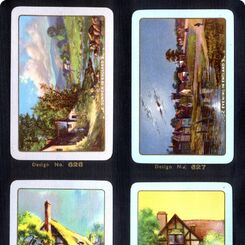
Waddington’s “Rural England” Series, 1933
Waddington’s "Rural England" Series, 1933.
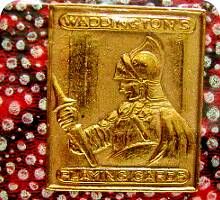
Waddington’s Old Master Series, 1933
Waddington’s Old Master Series, 1933

Waddington’s 1933 Trade Brochure
Waddington’s 1933 Trade Brochure.
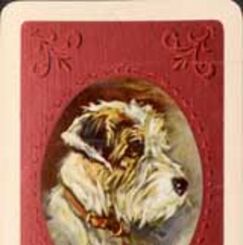
Waddington’s Dog Series
Waddington’s Dog Series, 1933
Most Popular
Our top articles from the past 60 days






















